Rating index:
Extraordinary (96-100)
Outstanding (93-95)
Very good to Excellent (89-92)
Above average to Good (86-88)
Below Average to Average (80-85)
Avoid (below 80)
More info >
Extraordinary (96-100)
Outstanding (93-95)
Very good to Excellent (89-92)
Above average to Good (86-88)
Below Average to Average (80-85)
Avoid (below 80)
More info >
Chef Yoshihiro Narisawa (b. 1969) started his career at the early age of 19, training in the three Michelin starred kitchens of Frédy Girardet in Crissier (Switzerland), of Paul Bocuse in Lyon and Joël Robuchon in Paris, and at Antica Osteria del Ponto in Milan, also three Michelin starred at the time. After eight years in Europe, Narisawa returned to Japan in 1996 to open his own restaurant La Napoule in Odawara (Kanagawa prefecture), some 50 miles from Tokyo. In 2003 he relocated his restaurant to its current location in Tokyo and renamed it Les Créations de Narisawa ("Narisawa"). Narisawa offers so-called "Innovative Satoyama Cuisine", a cuisine based on the principles of Satoyama culture. In a nutshell: a sustainable culture where people live in total harmony with their surroundings and the seasons.
Narisawa's Satoyama cuisine has gained international recognition, starting with a Michelin star in the inaugural 2007 Tokyo guide and a second Michelin star in 2010. In addition to the Michelin stars, Narisawa has also held high rankings in the World's 50 Best Restaurants list for a number of years. It entered the list at number 20 in 2009, and it is at number 18 in the current, 2017 edition of the list. When the World's 50 organisation published their first Asia edition in 2013, Narisawa took the number one spot; in the latest 2018 edition the restaurant still holds a top 10 position (number 6).
Narisawa is open for lunch and dinner Tuesday through Saturday and it offers one omakase-style tasting menu priced at ¥27,000 (£180) for lunch and ¥32,400 (£214) for dinner. I had lunch with my husband at Narisawa in March 2018 and our menu featured around 15 courses.
Lunch started with a playful and tasty course called "Bread of the Forest 2010". Casually arranged on a wooden plank were different colours of delicately flavoured soy bean powder (made to look like soil), the pink one flavoured with sakura (cherry blossom), various fresh leaves, a smooth mayo-like sauce made with fermented soy bean milk, to be scooped up with some burdock root crisps (made to look like tree bark). In the top left corner of the plank was a "bamboo" cup with oak and cedar-infused water. Alongside this, we were served an attractively presented dish of deep-fried ayu (sweetfish) served with a mildly sweet and floral sauce made with umu plums, sakura and a touch of rice vinegar. That leaves the bread part, its dough at this point still proofing (the final rise before baking) on a side table.

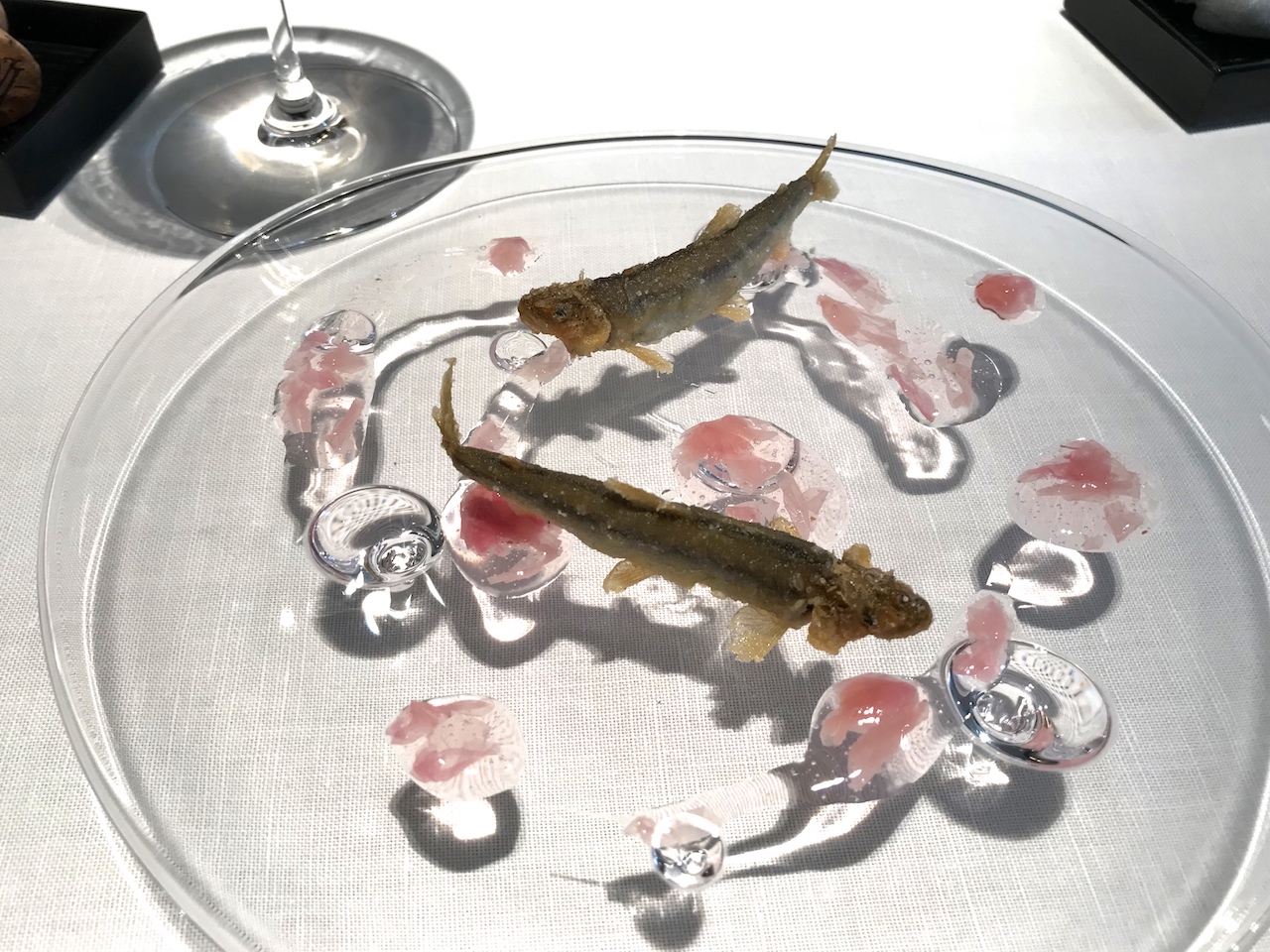
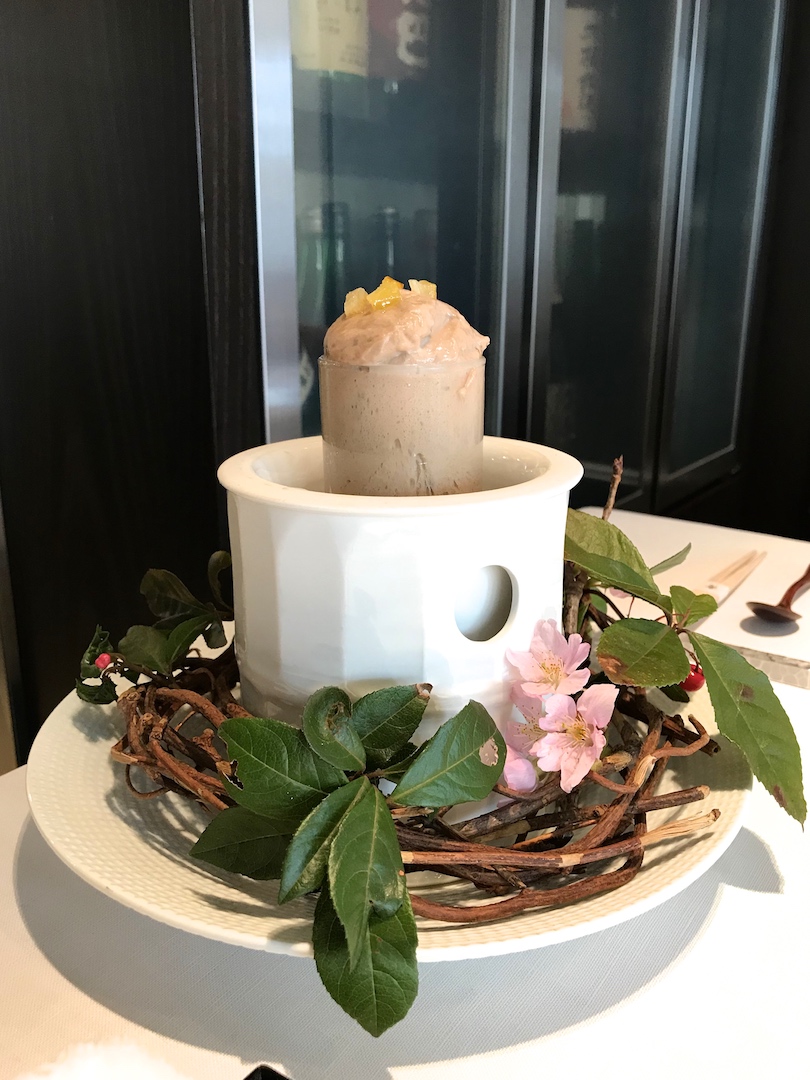
Second course was a delicately sweet soft yam bun, seasoned with some salt and with a treasure filling of Hokkaido sea urchin.
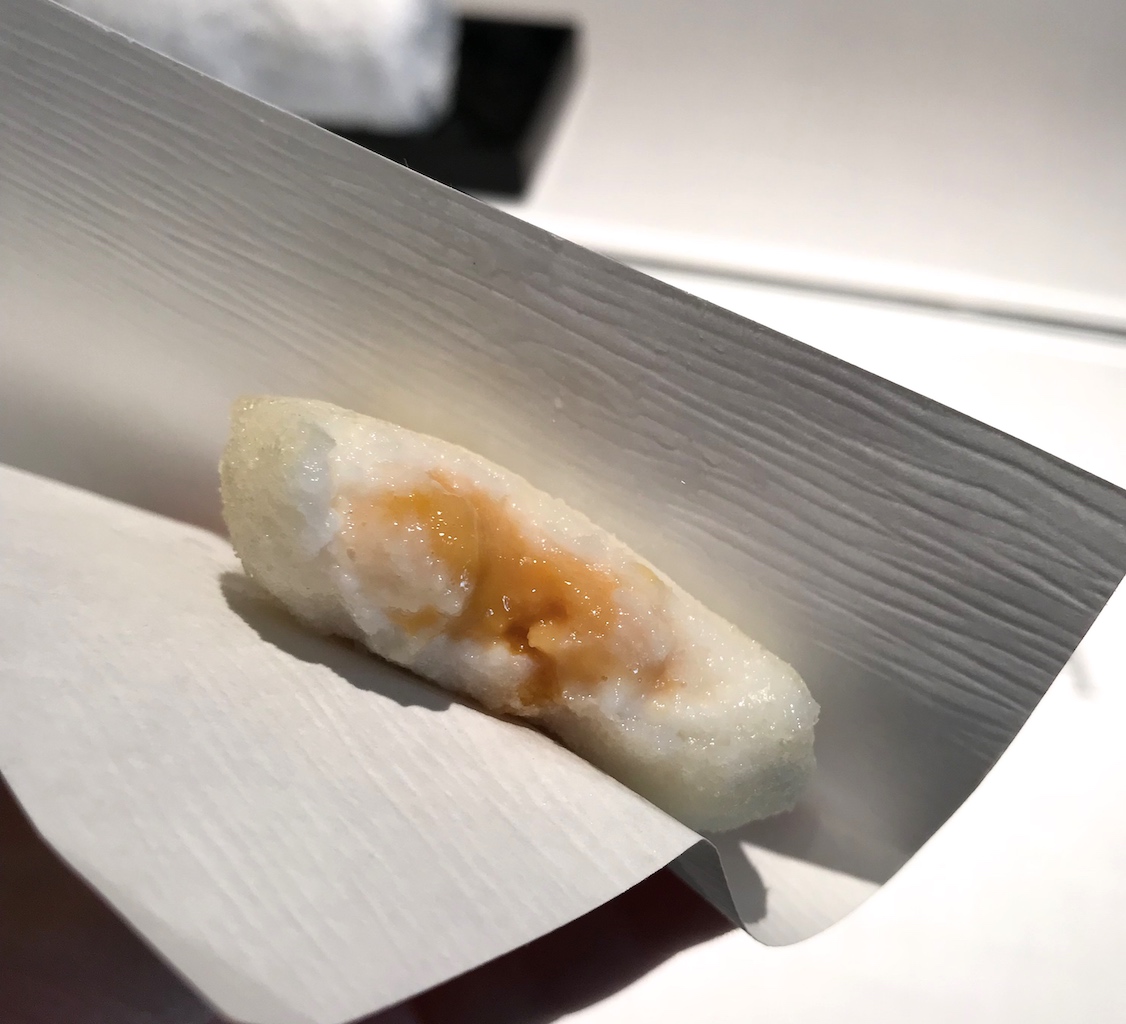
Shortly after, two preparations of soft-shell turtle (from Shizuoka) followed, starting with a concentrated turtle soup simply seasoned with some finely chopped ginger, followed by a barbecued turtle, served kebab-style on "Lindera" twigs and lightly brushed with sweet soy sauce. A fantastic and very elegant kebab with beautifully moist, sausage-like turtle meat with a nice and tangy shanso pepper seasoning, which made for a unique flavour experience with a lovely, tingling sensation.
.jpg)
A divine dish of Hokkaido crab and turnip was served next. In the middle of a glass bowl was a scooped-out turnip filled with sweet and juicy pieces of crab meat mixed with little cubes of the scooped out turnip. At the bottom of the turnip was some yuba (soybean milk skin) and surrounding the turnip was a luxurious creamy sauce made with turnip and white miso. An exceptional dish, the crab having a wonderful sweet sumptuousness to it, the turnip offering a mild peppery counterpoint, and the miso flavoured sauce adding a delicious creaminess.
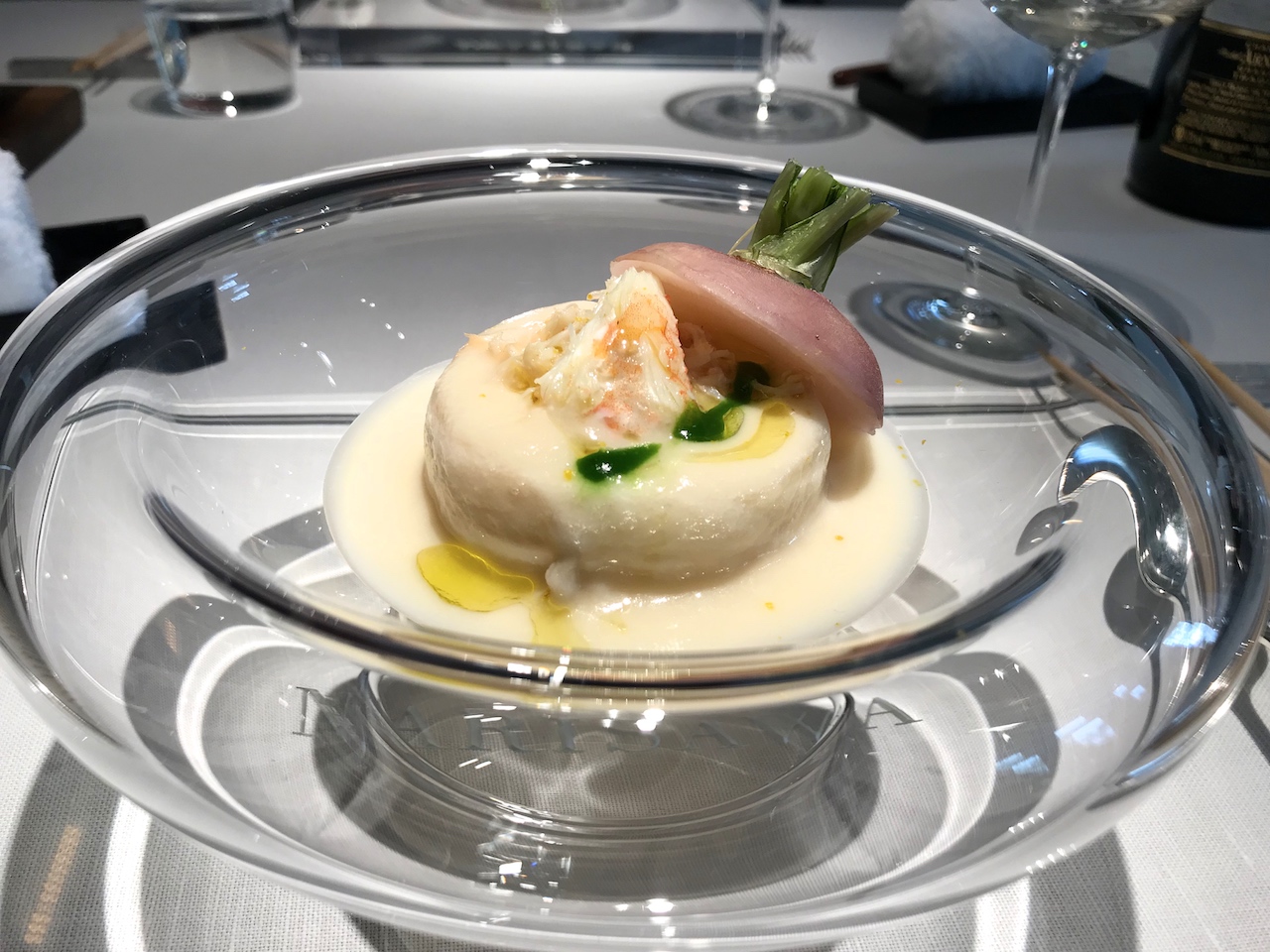
Meanwhile the bread dough had finished proofing and subsequently two little rolls were baked tableside in a hot stone pot and served with a gorgeous butter covered with "moss".
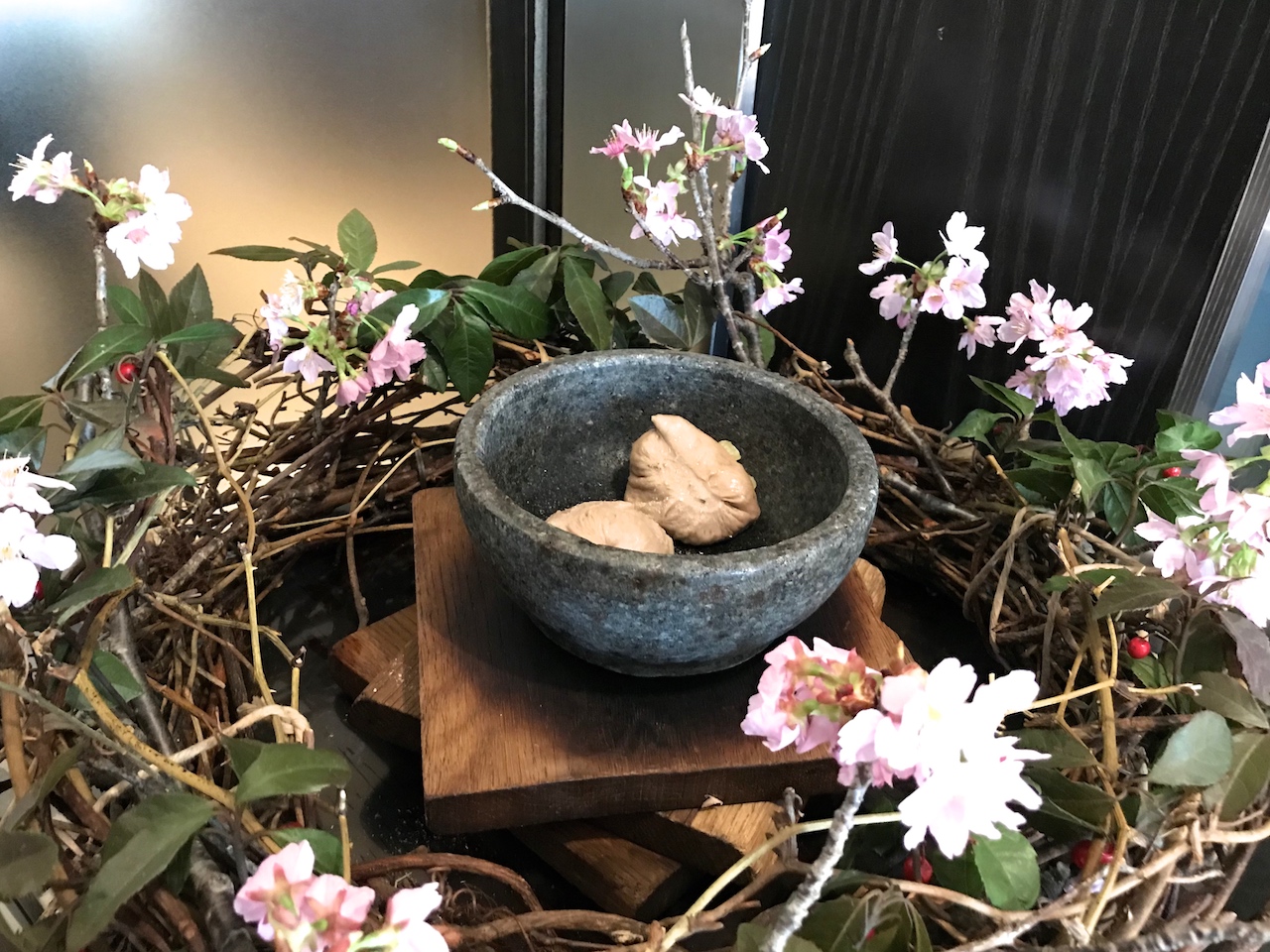
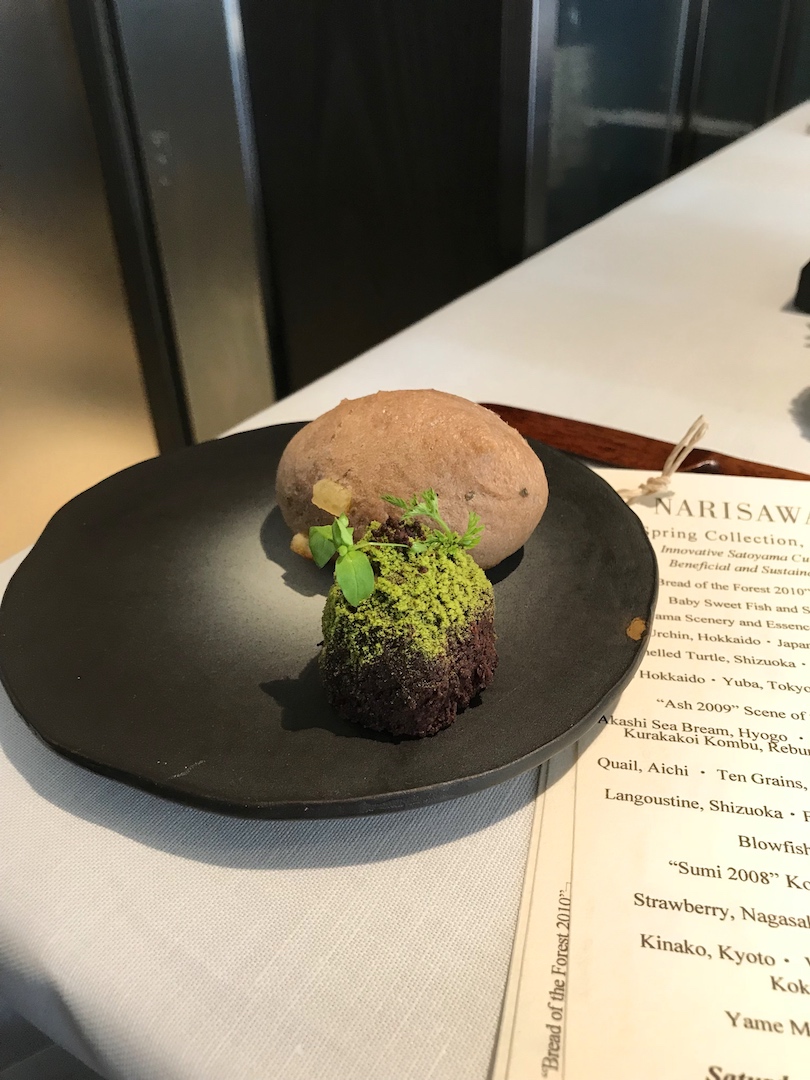

Showstopper today was "Ash 2009", a simply spectacular dish of barbecued squid, served with a liquid nitrogen "ash" and a concentrated red pepper puree. The ash seemed tricksy at first (usually liquid nitrogen only adds a dramatic fog), but here it turned out to have a surprising twist. Once melted on the plate the ash transformed into a truly magnificent sauce with dazzling flavours of paprika, lemon juice and squid ink, the paprika providing a bittersweet depth to the sauce and the lemon adding just the right touch of zing. And of course the impeccably cooked squid; the barbecueing had kept it wonderfully tender and its gentle smokiness intensified all the flavours of the sauce.

Next on the menu was a handsomely presented dish of raw Akashi sea bream accompanied by a seaweed broth with 3 year aged kombu and radish, the warm broth gently cooking the sea bream, giving it a nice off-raw finish.
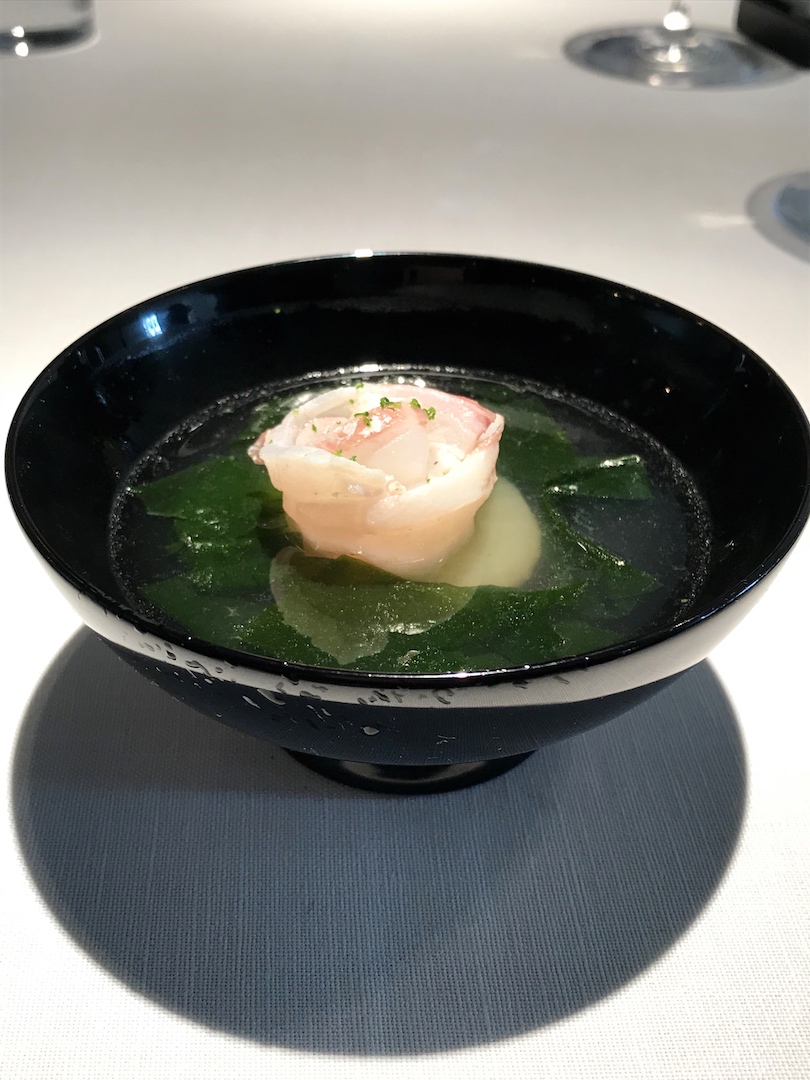
Ninth course was a classically based dish of quail (barbecued whole) placed on top of a mixture of ten different types of grains, served with an elegantly rich sauce made with burdock and cream, and garnished with thin strips of black truffle. Expertly cooked quail, with tender and pink meat, and cooking it whole made it burst with flavour. Wonderful use of truffle, not just used as a fancy ingredient here, but lending texture and depth of flavour to the dish. Another outstanding course, satisfying on every level, and an impressive display of technique and skill.
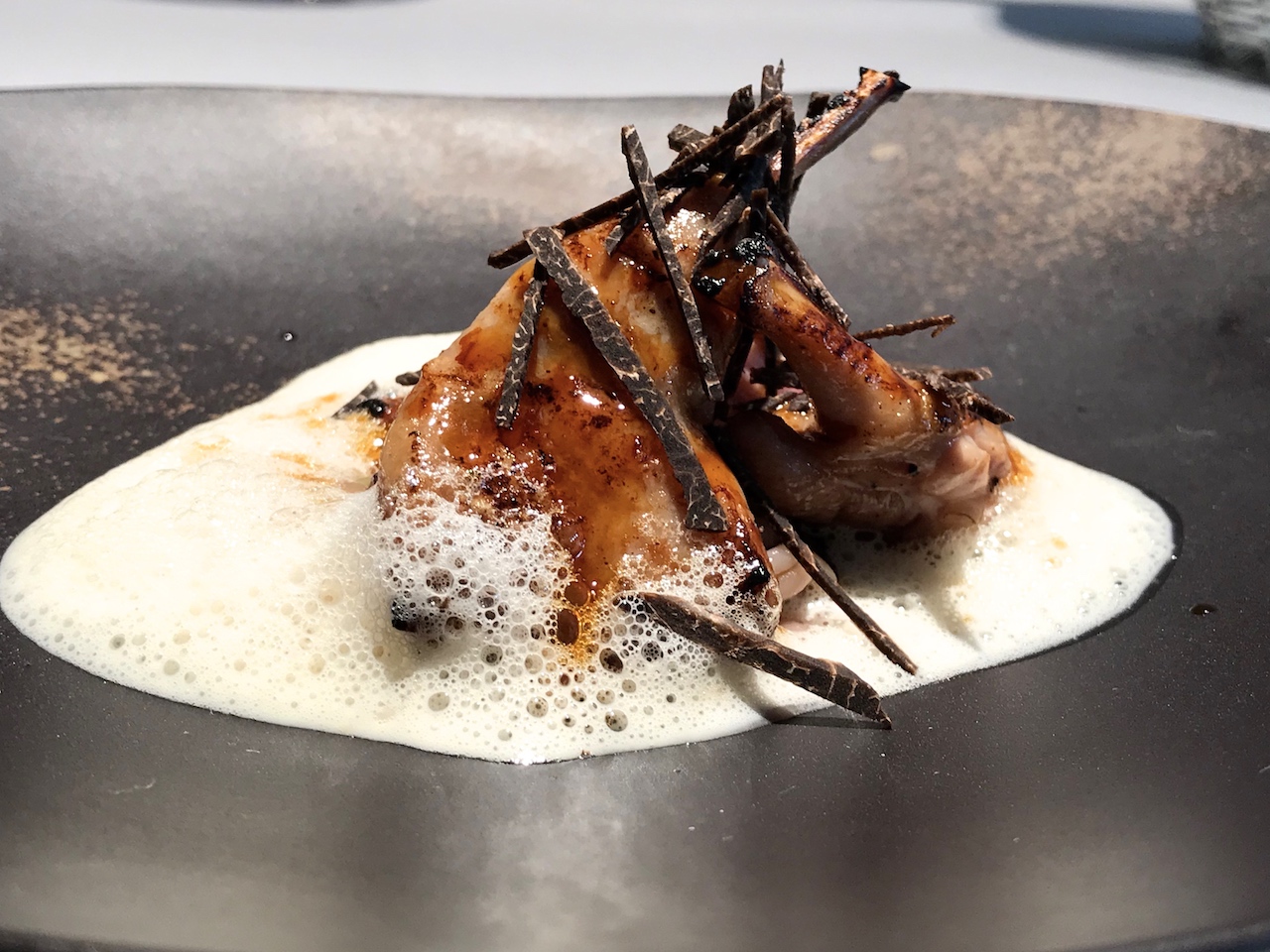
On to the the tenth course, which was lighter in style. An impeccably fresh langoustine (from the restaurant's own basin) served in its own shell with spring vegetables, including the much celebrated Nanohana (rapeseed buds about to blossom), and cleverly paired with a pure and concentrated ham broth, its elegant saltiness seasoning the other ingredients beautifully.
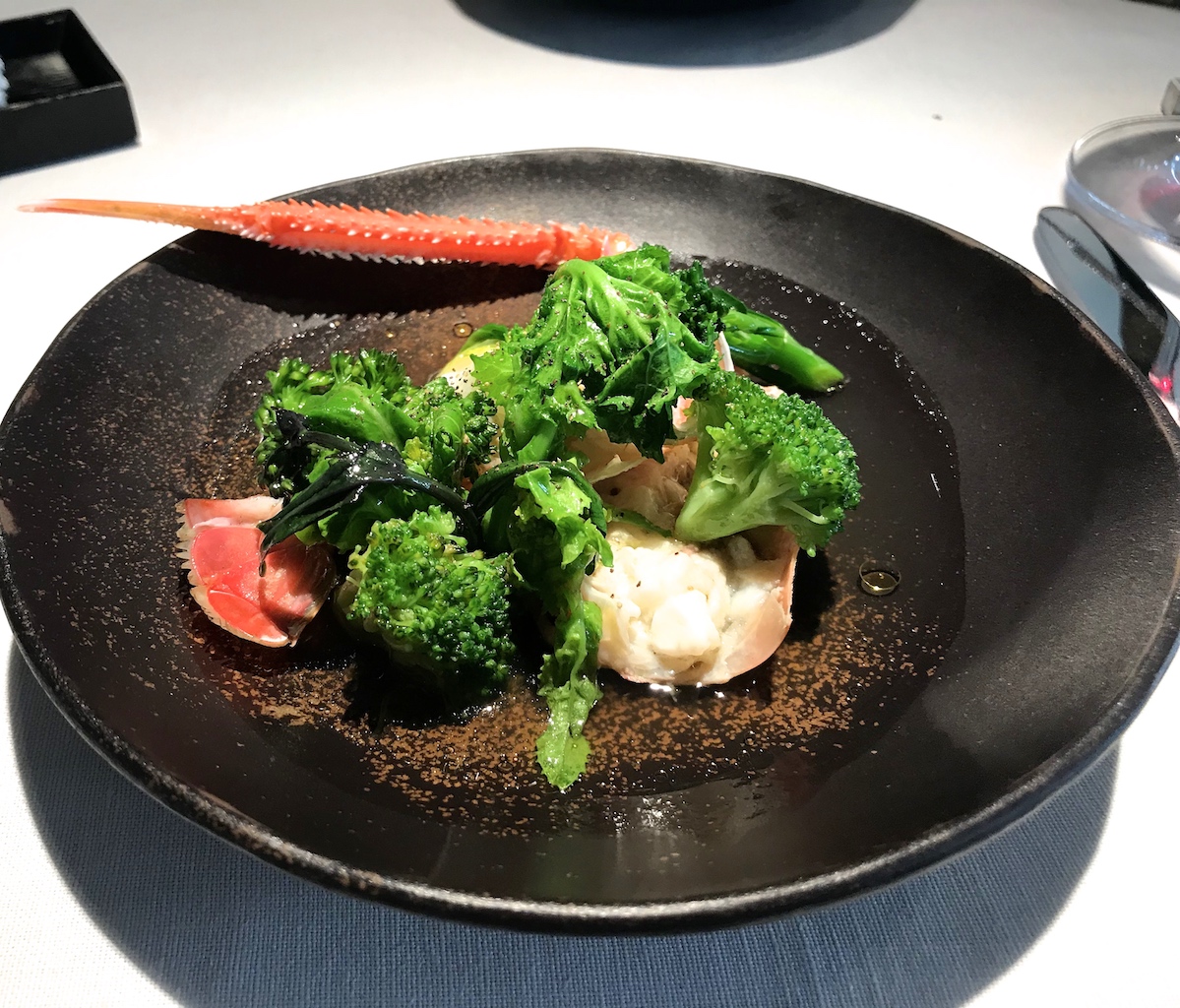
Another fish course followed, but not just any fish: two pieces of blowfish aka fugu (yep, the potentially poisonous one), served here kareege-style (deep-fried in oil) with a delicious golden colour all around. And the sauce was not just any sauce, but a fugu shiraku sauce (shiraku meaning fish sperm, a popular seasonal delicacy), flavoured with yuzu zest and kasu. Both the fugu and the shiraku were new flavours for me, but I enjoyed them very much, the fugu being nice and succulent and marrying well with the milky sauce that had little oceanic notes and a subtle funkiness from the kasu.
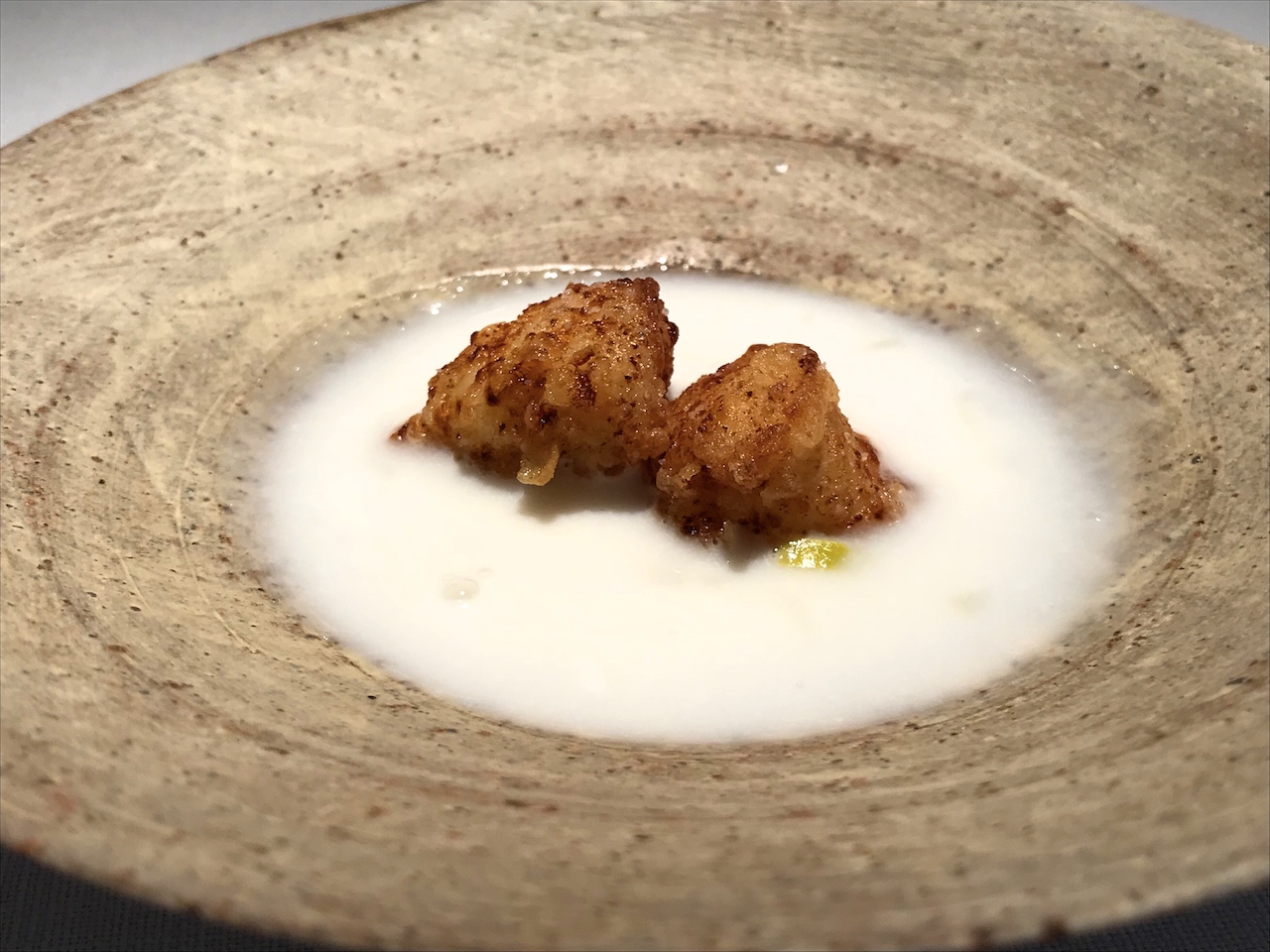
The meat course, called "Sumi 2008" (sumi means charcoal) was a dish of Kobe beef (rump steak), coated with a thin layer of leek ash, thereby resembling a lump of charcoal, first presented whole and then served cut through, which provided a stunning colour effect. Also on the plate was burdock root, dusted with powdered sugar, and filled with soft and caramelised burduck flesh. Finally the sauce, a gloriously intense sauce of beef essence and red wine, reduced for two days. An exceptional dish, with stupendously good beef (I mean, look at it!) but I was equally impressed with the minimalist simplicity and the visually dramatic starkness.
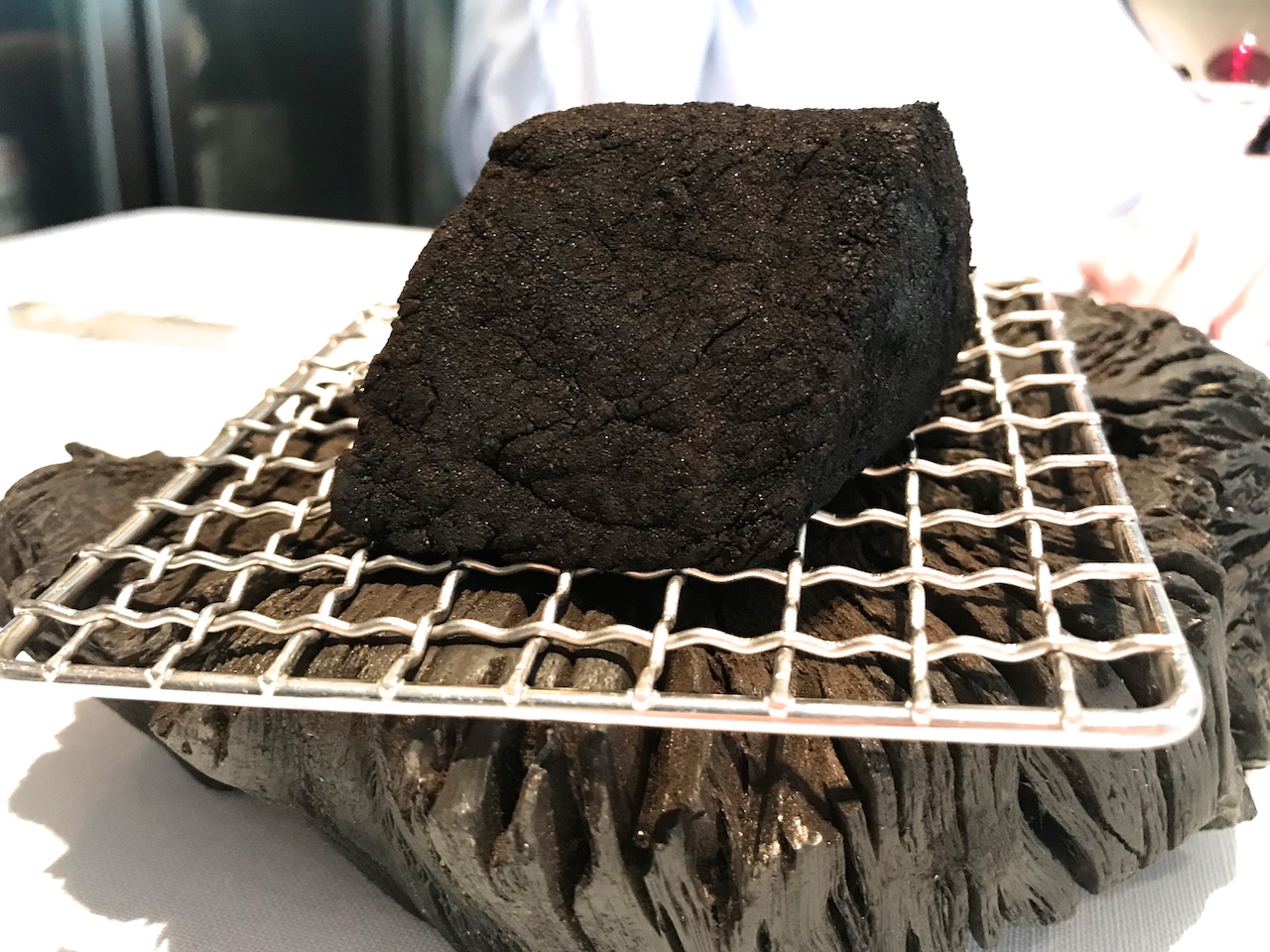

The meal was concluded with three desserts. To start there was a Sakura mochi with a strawberry puree filling, covered with a thin sheet of sakura jelly, and accompanied by a sakura sorbet and clear sakura juice. The mochis I had in the past were all made with a glutinous rice paste, usually offering a chewy-like texture, but this one had a full-grain texture, offering more body and a fuller mouthfeel. Loved the purity and lightness of this dessert, the sakura offering lovely floral notes and an echoing sweetness (in the sorbet).
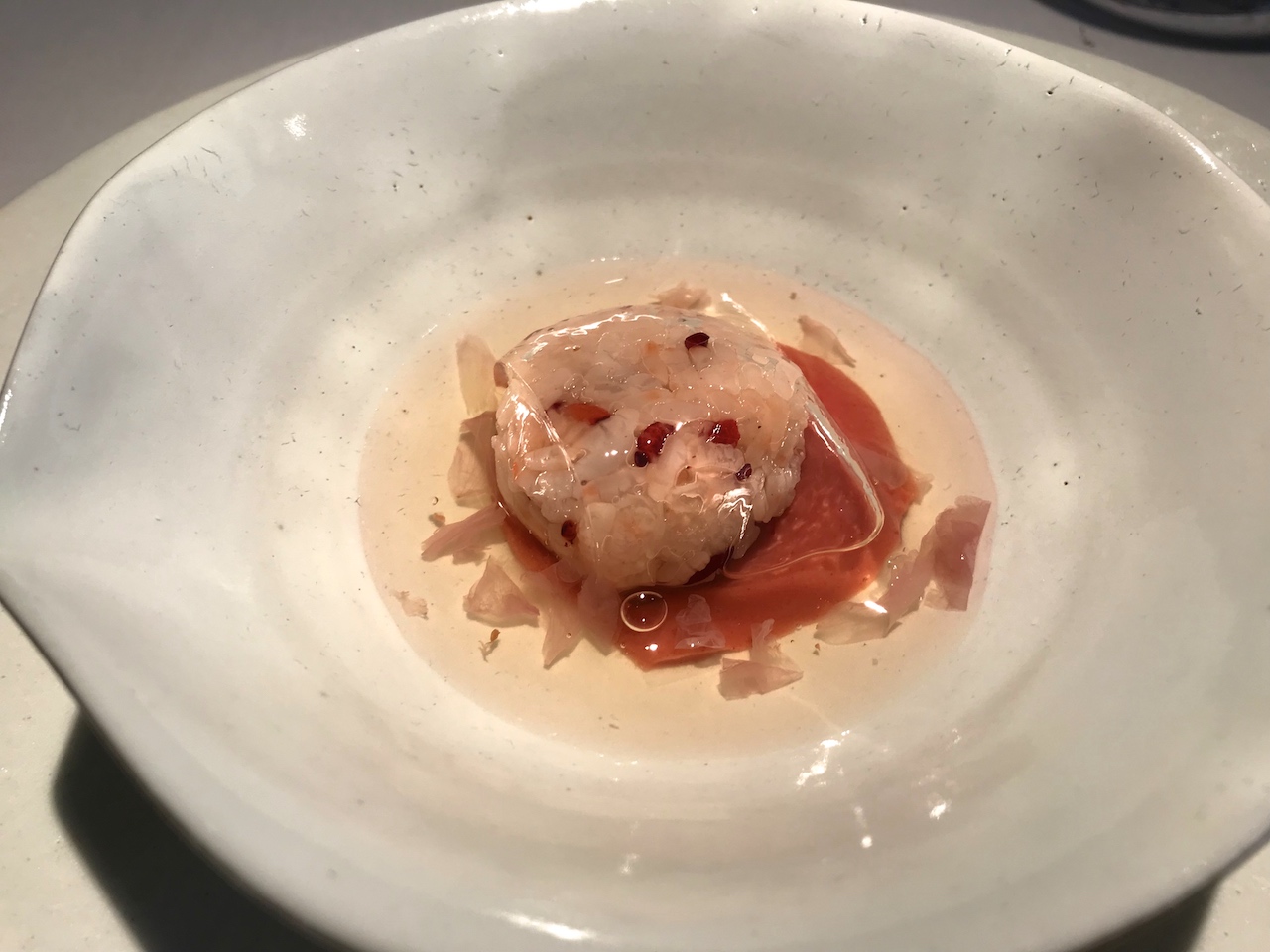
Second dessert was a spongy, yuzu-flavoured Kinako (soy bean flour) Chiffon cake wonderfully paired with a Wasanbon (Japanese sugar) ice cream, a dark-golden Wasanbon syrup, and little, deliciously chewy warabi mochis. A delightful dessert with a well-balanced, sophisticated sweetness, the syrup delivering a lovely, molasses-like sugariness, which brought all the ingredients together.
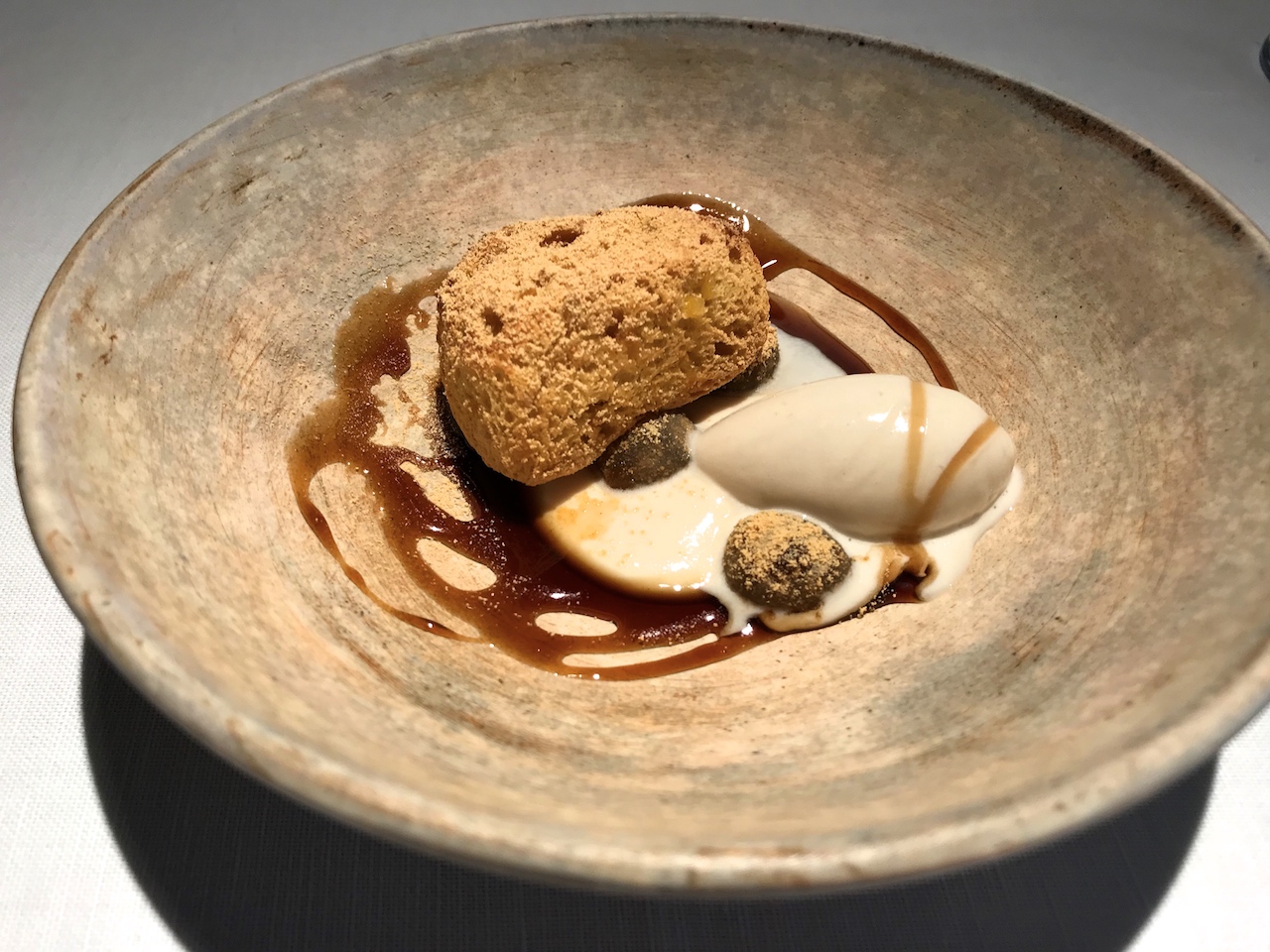
Finally there was a beautifully made Monaka (a traditional Japanese sweet treat aka Wagahsi) here consisting of two crisp mochi wafers with a delicate filling of mildly sweet red bean paste that had a thin and shiny matcha coating.

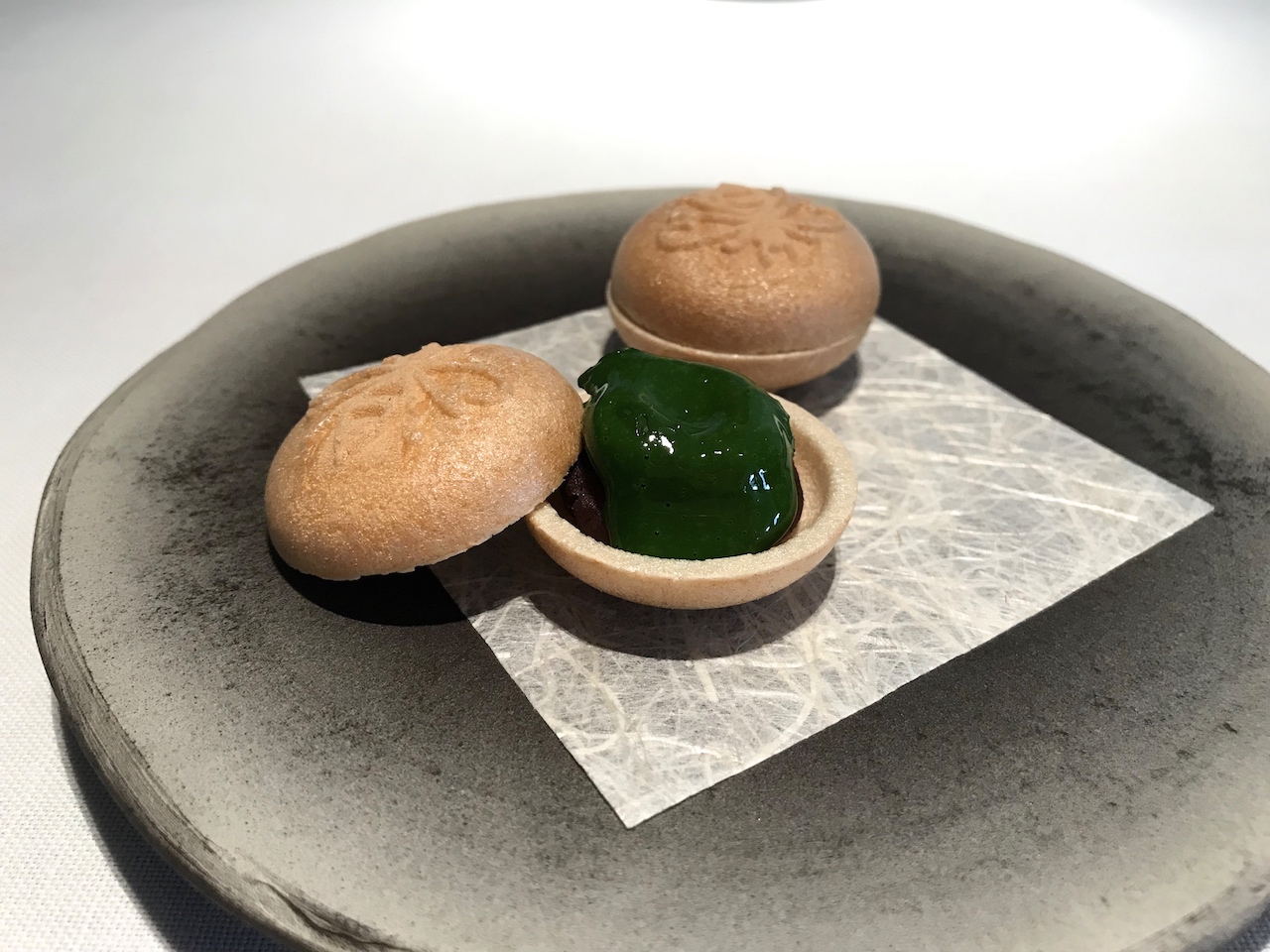
There are many arguments for and against tasting menus, but the key element of a tasting menu is that it has to be well-designed and carefully balanced, each course leaving you satisfied but also curious for the next. Today's menu delivered on all counts. Chef Narisawa's cuisine is obviously rooted in Japanese tradition, with a menu dedicated to the beauty of the season, but judiciously infused with contemporary (molecular) techniques and an unconventional and progressive use of ingredients (certainly in the Japanese context).
This lunch was genuinely impressive with a number of henomenal dishes ranging from magnificently intense and profound (the squid, the quail and the beef) to exquisitely delicate and pure (the turnip and crab, the langoustine, and the sakura mochi), all prepared with great finesse and the dishes sing of seasonality. Adding to this experience was the very attentive and professional service. Based on the food alone, Narisawa is without a doubt worth a journey to Tokyo. Why Michelin Japan has not yet awarded a third star here, remains a mystery to me.
Narisawa
Minami Ayoyama 2-6-15,
Minami Ayoyama 2-6-15,
Minato-ku, Tokyo













